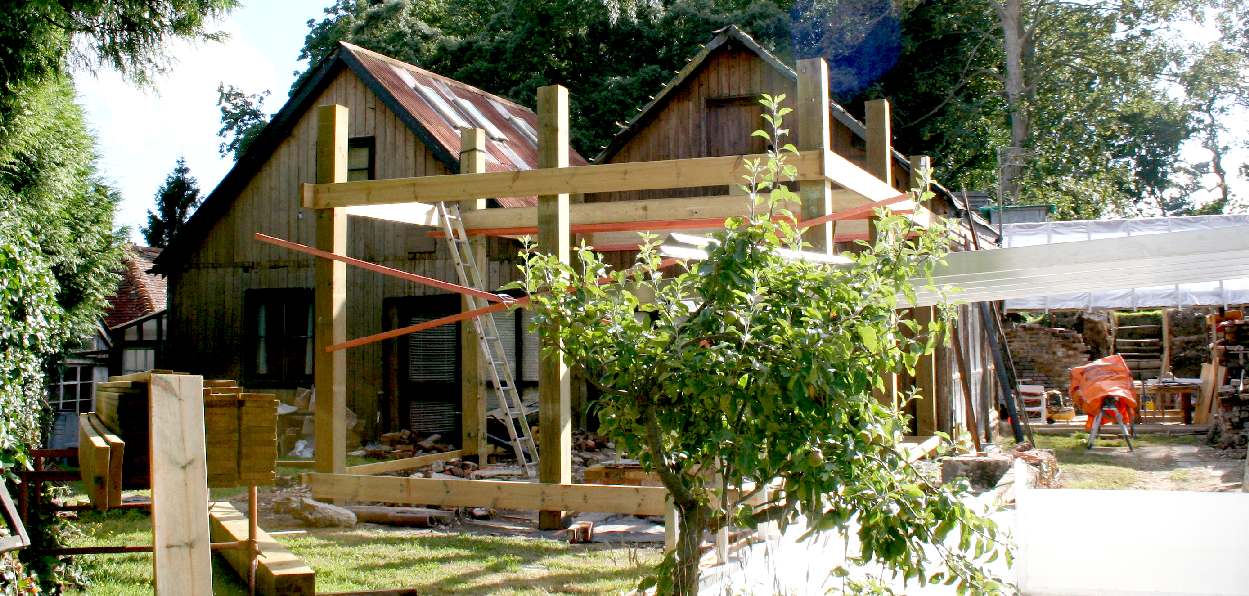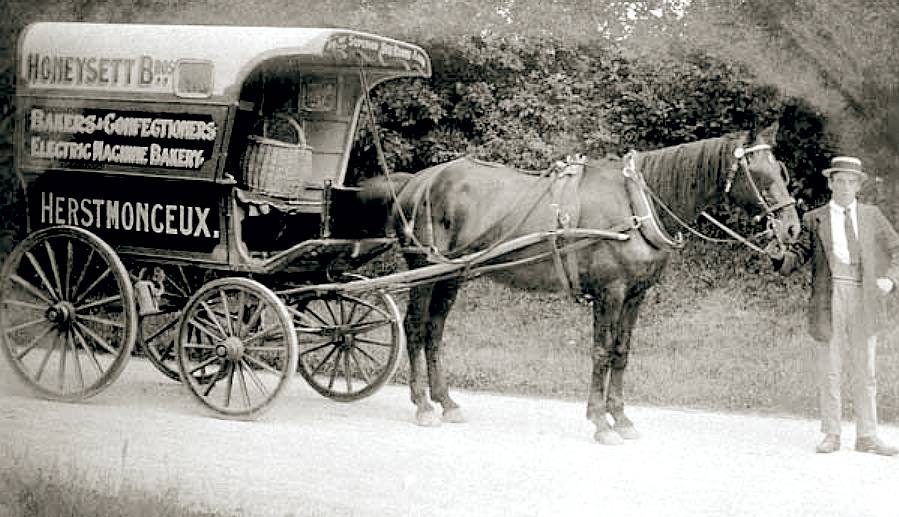|
PROTECTING ARCHAEOLOGICAL REMAINS IN SUSSEX
|
|
|
CONSERVATION DILEMMA - Our problem was that the generating mounts were both exposed and dangerous. The hatch at the top of this section was internal, leading to the third section that made the gas for the gas engine from coal. You can see the holes in the match-boarding, presumably for the ceiling of the missing (and all important) section of building - since there were more concrete mountings in this footprint than elsewhere on this very important archeological asset. Please note that this picture is Copyright © Lime Park Heritage Trust August 3 2016, all rights reserved. You will need permission from the Trust to use this photograph except for private study or research.
How do you protect archaeological remains and retain some kind of functionality? About a third of the generating building was removed in 1936, leaving the foundations exposed to the elements and dangerous in that iron threads and concrete dips and highs would catch out the unwary. Not to mention that the underground water chamber represented a trap, especially for those that cannot swim. A repair would have been effected immediately, but for the tragedy that befell the entrepreneur that began this enterprise around C1900. The water chamber is now in use again for research into ways of recovering plastic from our polluted oceans.
After the Baron de Roemer passed, leaving no heir, it is clear that no effort was made by any of the subsequent owners to repair the generating buildings and they fell into disrepair. Fortunately, the Lime Park Heritage Trust have the services of an architect provided on a free basis, such that we can afford to cover the dangerous engine mountings.
Other help has come in the form of discounts from valued suppliers of posts and beams. In particular we should like to express our gratitude to Tate Fencing Ltd, Yellowcoat Sawmill, Flimwell, East Sussex, TN5 7PR, who prepared our posts and delivered them very thoughtfully and exactly when requested, so helping us to manage the project with minimal clutter. You can reach Tate on: 01580 879 900 or via their website: http://tate-fencing.co.uk
ROMAN GARDEN - Using the footprint of the original building, a gang of students and volunteers have put up a pleasing structure that is useful and in keeping with the wooden building and country setting, while also preventing interested visitors from injuring themselves. The main issue is of course to protect the foundations from further erosion, but the Health & Safety of those studying early electrical installations is also high on the agenda. Please note that this picture is Copyright © Lime Park Heritage Trust August 3 2016, all rights reserved. You will need permission from the Trust to use this photograph except for private study or research.
FIRE RETARDANT - If you are responsible for a wooden building, even one as old as this one, it does not hurt to spread some love in the form of a treatment that (is expensive but) does what is claims, and that is to choke flames at source. Previously, this amazing fluid was difficult to source in the UK, but has been available for some time from specialist suppliers such as Fire Stopping Shop.
HR-Prof is simple to use and safe to apply. Possessing high diffusion properties it quickly penetrates the structure of the substrate. Unlike intumescent systems it does not require an additional protective finishing coat and can be left natural. However, if required HR-Prof can be over-coated with wood stains, varnishes and some paints.
LINKS
http://tate-fencing.co.uk http://www.english-heritage.org.uk/ http://www.thekeep.info/ http://www.heritagegateway.org.uk/gateway/ http://www.eastsussex.gov.uk/environment/archaeology/default.htm
HERITAGE INDEX A - Z
AVIATION - EASTBOURNE BARCLAYS BANKING LET DOWN - MISSING ACCOUNT MONEY BARON CARL VON ROEMER & CHARLES de ROEMER CAMPBELL HALL - BLUEBIRD ELECTRIC CARS GAS ENGINES - COAL CONVERSION, INTERNAL COMBUSTION OBSERVATORY - HERSTMONCEUX CASTLE SOLAR LADY - STATUE
LOCAL HISTORY - A horse drawn wagon operated in Herstmonceux by the local bakery. This photograph is from an old postcard courtesy of Mick Hall. The building adjacent to Herstmonceux Museum was the original stables for Lime Park. The generating works made it possible to do the unthinkable in 1913, bake bread using electric ovens in a sleepy little village in Sussex that nobody had heard of.
|
|
|
This website is Copyright © 2016. All rights reserved. All other trademarks are hereby acknowledged. Contact Us www.cherrymortgages.com
|



